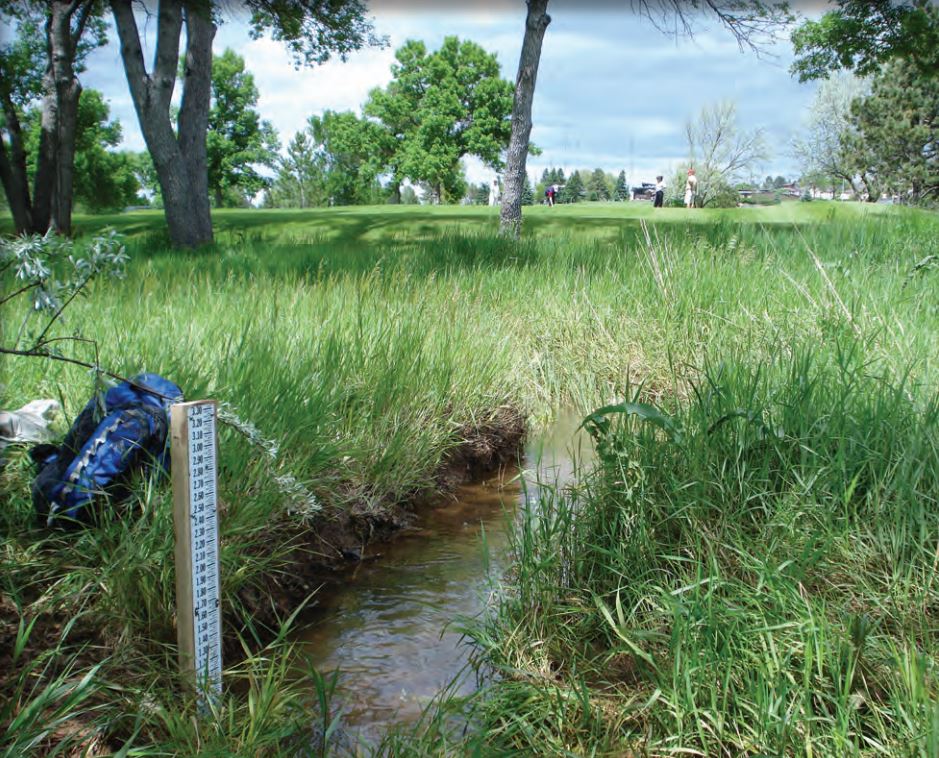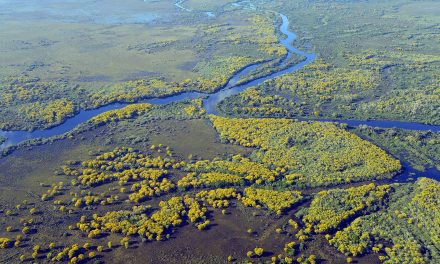
The U.S. Geological Survey evaluated stormwater runoff in Rapid City, South Dakota from 2008 to 2014. Image by USGS
On May 12, the U.S. Geological Survey (USGS) released 9 years of stormwater quality data for Albuquerque, New Mexico. In partnership with the City of Albuquerque, the Albuquerque Metropolitan Arroyo Flood Control Authority, the New Mexico Department of Transportation, and the University of New Mexico, USGS sampled nine city outfalls from 2003 to 2012.
The nine outfalls drained basins with residential, industrial, commercial, agricultural, and undeveloped land uses. Stormwater samples were analyzed for selected physical and chemical characteristics, including nutrients, major ions, metals, organic compounds, and bacteria.
In general, samples showed that stormwater quality was similar to the water quality of the Rio Grande.
Of the almost 200 organic compounds analyzed, about 30% were found at or above analytical detection limits. Maximum concentrations for some polycyclic aromatic hydrocarbons did exceed water quality criteria, but concentrations of volatile and semivolatile organic compounds, as well as polychlorinated biphenyls and pesticides, were generally low. Concentrations for E. coli in stormwater often exceeded New Mexico water-quality standards, even from outfalls draining undeveloped land.
When compared to six other Western U.S. cities, Albuquerque’s stormwater was fairly similar, though median concentrations for suspended solids, total phosphorus, and bacteria, on the whole, were higher than most other locations. Read more.
On May 15, USGS released another report characterizing stormwater runoff in Rapid City, South Dakota from 2008 to 2014. The paper also evaluates pollutant reduction of wetland channels implemented as stormwater controls. Through the study, researchers discovered that the three wetlands reduced fecal coliform bacteria by about 0%, 21%, and 36%. Total wetland storage volume affected pollutant reductions ― total suspended solids, phosphorus, and ammonia reductions were greatest in the wetland with the greatest volume.
Additionally, researchers found that chloride concentrations increased from inflow to outflow in some of the wetland channels ― possibly due to mobilization of road salts. Read more.






